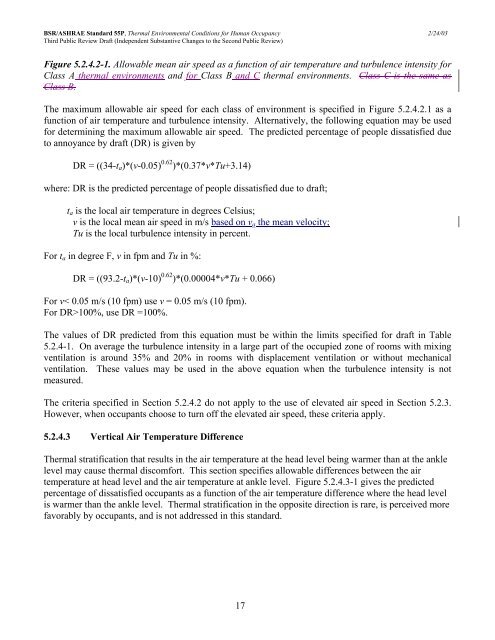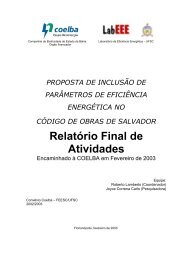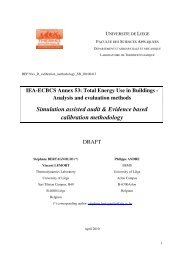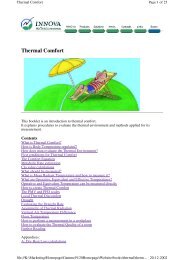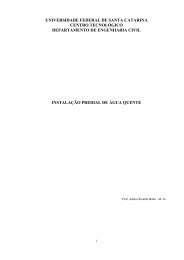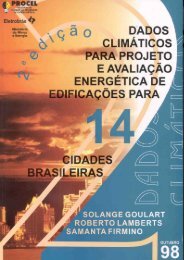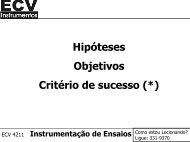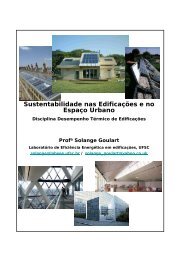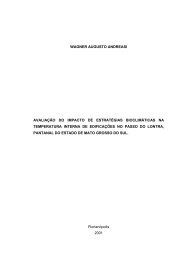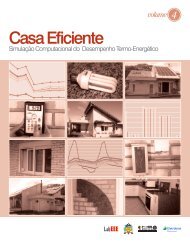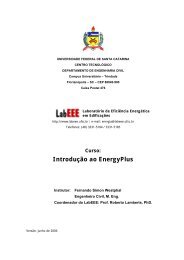ASHRAE STANDARD - 55R
ASHRAE STANDARD - 55R
ASHRAE STANDARD - 55R
Create successful ePaper yourself
Turn your PDF publications into a flip-book with our unique Google optimized e-Paper software.
BSR/<strong>ASHRAE</strong> Standard 55P, Thermal Environmental Conditions for Human Occupancy 2/24/03<br />
Third Public Review Draft (Independent Substantive Changes to the Second Public Review)<br />
Figure 5.2.4.2-1. Allowable mean air speed as a function of air temperature and turbulence intensity for<br />
Class A thermal environments and for Class B and C thermal environments. Class C is the same as<br />
Class B.<br />
The maximum allowable air speed for each class of environment is specified in Figure 5.2.4.2.1 as a<br />
function of air temperature and turbulence intensity. Alternatively, the following equation may be used<br />
for determining the maximum allowable air speed. The predicted percentage of people dissatisfied due<br />
to annoyance by draft (DR) is given by<br />
DR = ((34-ta)*(v-0.05) 0.62 )*(0.37*v*Tu+3.14)<br />
where: DR is the predicted percentage of people dissatisfied due to draft;<br />
ta is the local air temperature in degrees Celsius;<br />
v is the local mean air speed in m/s based on va the mean velocity;<br />
Tu is the local turbulence intensity in percent.<br />
For ta in degree F, v in fpm and Tu in %:<br />
DR = ((93.2-ta)*(v-10) 0.62 )*(0.00004*v*Tu + 0.066)<br />
For v< 0.05 m/s (10 fpm) use v = 0.05 m/s (10 fpm).<br />
For DR>100%, use DR =100%.<br />
The values of DR predicted from this equation must be within the limits specified for draft in Table<br />
5.2.4-1. On average the turbulence intensity in a large part of the occupied zone of rooms with mixing<br />
ventilation is around 35% and 20% in rooms with displacement ventilation or without mechanical<br />
ventilation. These values may be used in the above equation when the turbulence intensity is not<br />
measured.<br />
The criteria specified in Section 5.2.4.2 do not apply to the use of elevated air speed in Section 5.2.3.<br />
However, when occupants choose to turn off the elevated air speed, these criteria apply.<br />
5.2.4.3 Vertical Air Temperature Difference<br />
Thermal stratification that results in the air temperature at the head level being warmer than at the ankle<br />
level may cause thermal discomfort. This section specifies allowable differences between the air<br />
temperature at head level and the air temperature at ankle level. Figure 5.2.4.3-1 gives the predicted<br />
percentage of dissatisfied occupants as a function of the air temperature difference where the head level<br />
is warmer than the ankle level. Thermal stratification in the opposite direction is rare, is perceived more<br />
favorably by occupants, and is not addressed in this standard.<br />
17


